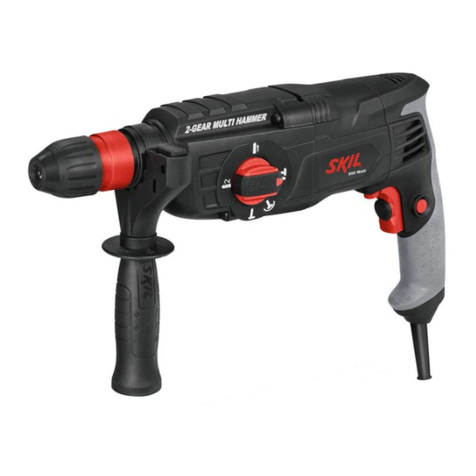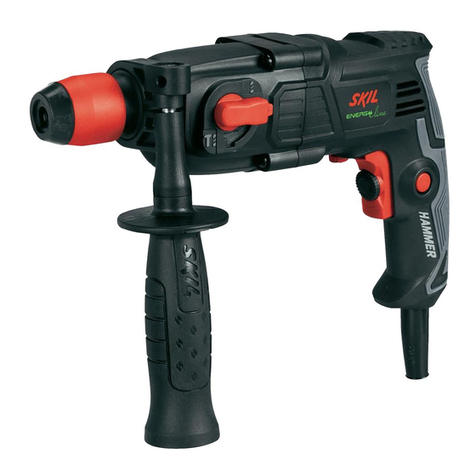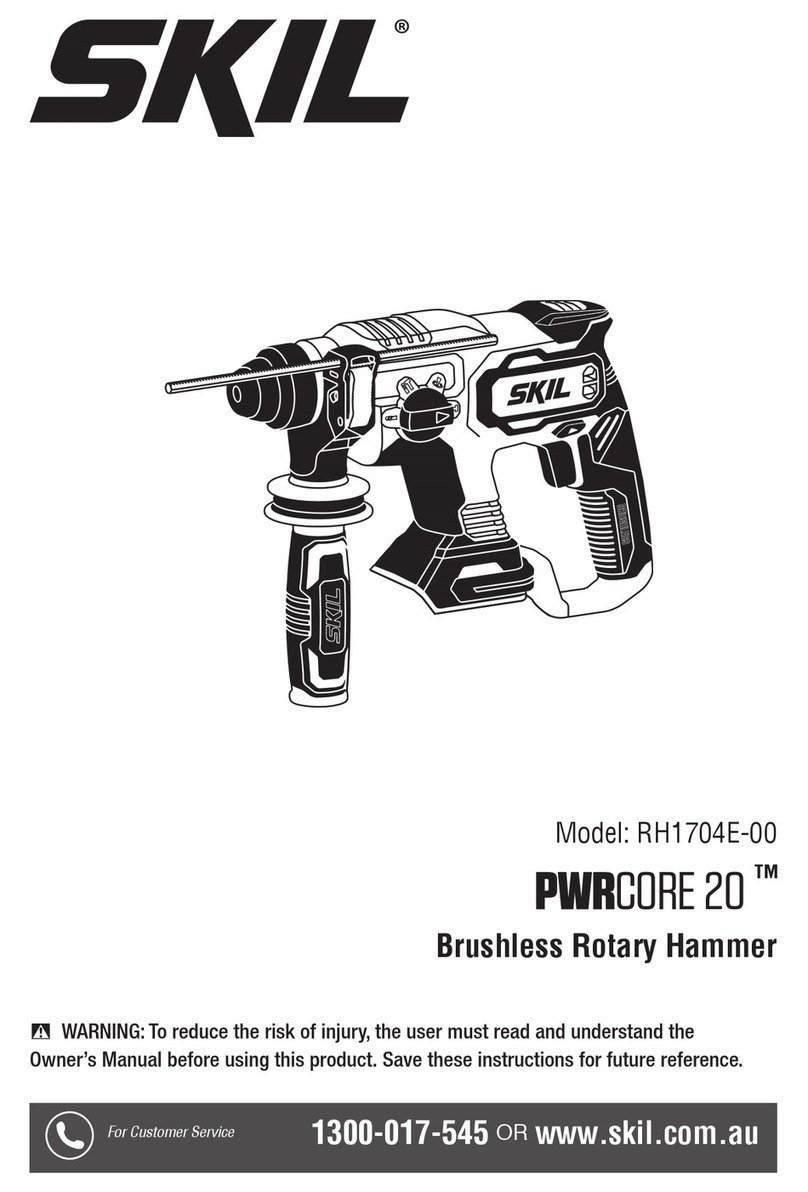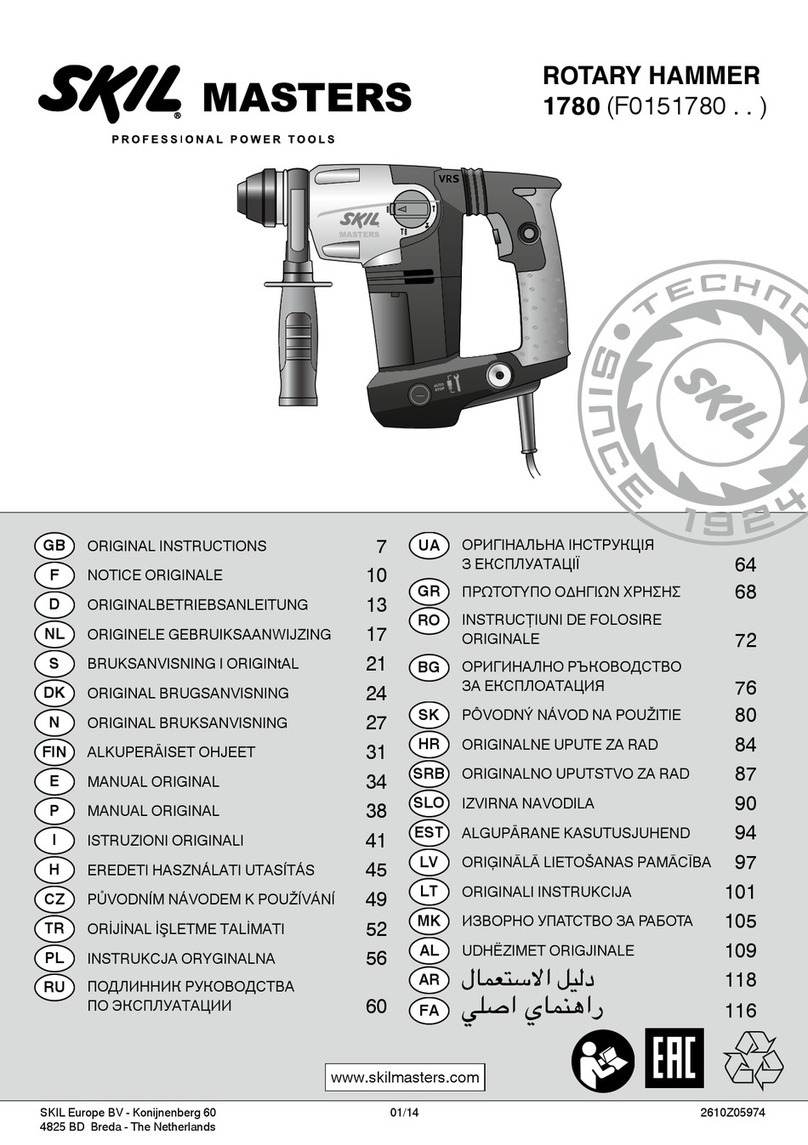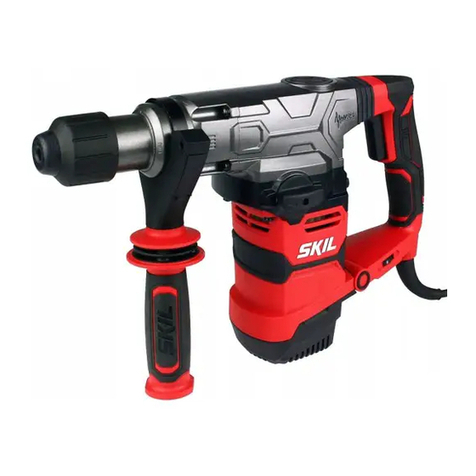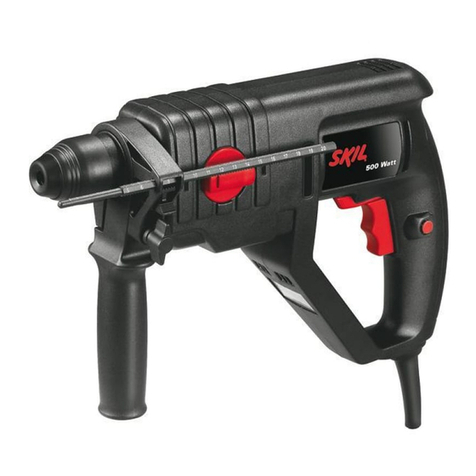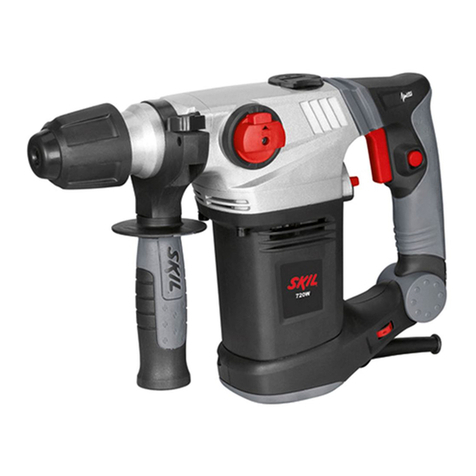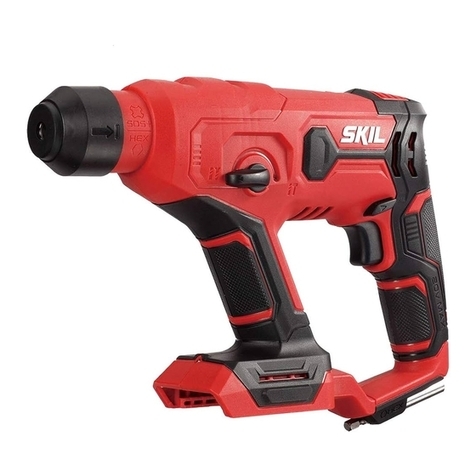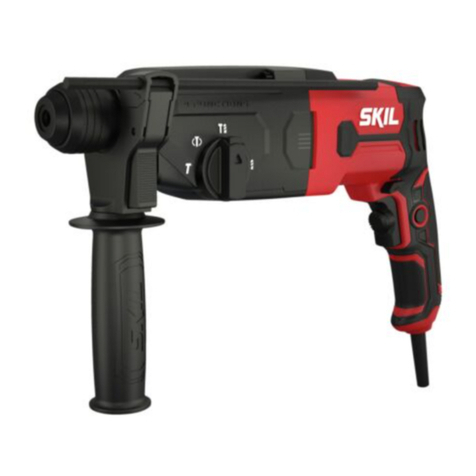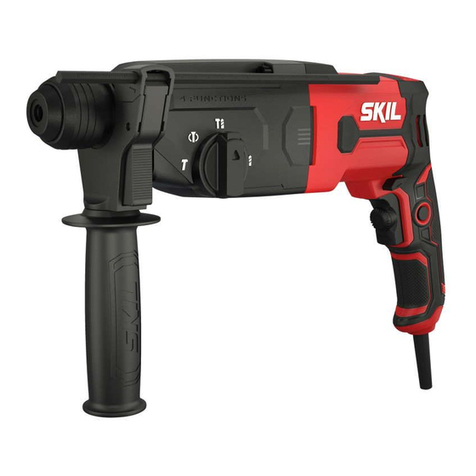
10
• Always disconnect plug from power source before
making any adjustment or changing any accessory
ACCESSORIES
• SKIL can assure awless functioning of the tool only
when original accessories are used
• Use only accessories with an allowable speed matching
at least the highest no-load speed of the tool
BEFORE USE
• Use completely unrolled and safe extension cords with a
capacity of 16 Amps (U.K. 13 Amps)
• Avoid damage that can be caused by screws, nails and
other elements in your workpiece; remove them before
you start working
• Secure the workpiece (a workpiece clamped with
clamping devices or in a vice is held more securely than
by hand)
• Use suitable detectors to nd hidden utility lines
or call the local utility company for assistance
(contact with electric lines can lead to re or electrical
shock; damaging a gas line can result in an explosion;
penetrating a water pipe will cause property damage or
an electrical shock)
• Dust from material such as paint containing lead, some
wood species, minerals and metal may be harmful
(contact with or inhalation of the dust may cause allergic
reactions and/or respiratory diseases to the operator or
bystanders); wear a dust mask and work with a dust
extraction device when connectable
• Certain kinds of dust are classied as carcinogenic
(such as oak and beech dust) especially in conjunction
with additives for wood conditioning; wear a dust
mask and work with a dust extraction device when
connectable
• Follow the dust-related national requirements for the
materials you want to work with
DURING USE
• Always keep the cord away from moving parts of the tool
• In case of electrical or mechanical malfunction,
immediately switch o the tool and disconnect the plug
• If the cord is damaged or cut through while working, do
not touch the cord, but immediately disconnect the plug
• If the drill bit becomes unexpectedly jammed (causing
a sudden, dangerous reaction), immediately switch o
the tool
• Be aware of the forces that occur as a result of jamming
(especially when drilling metals); always use auxiliary
handle and take a secure stance
AFTER USE
• When you put away the tool, switch o the motor and
ensure that all moving parts have come to a complete
standstill
EXPLANATION OF SYMBOLS ON TOOL
3Read the instruction manual before use
4Double insulation (no earth wire required)
5Do not dispose of the tool together with household waste
material
WHEN CONNECTING NEW 3-PIN PLUG (U.K. ONLY):
• Do not connect the blue (= neutral) or brown (= live) wire
in the cord of this tool to the earth terminal of the plug
•If for any reason the old plug is cut o the cord of this tool,
it must be disposed of safely and not left unattended
USE
• On/o 6
or remove the battery pack, if detachable, from
the power tool before making any adjustments,
changing accessories, or storing power tools. Such
preventive safety measures reduce the risk of starting the
power tool accidentally.
d) Store idle power tools out of the reach of children
and do not allow persons unfamiliar with the power
tool or these instructions to operate the power tool.
Power tools are dangerous in the hands of untrained
users.
e) Maintain power tools and accessories. Check for
misalignment or binding of moving parts, breakage
of parts and any other condition that may aect the
power tool’s operation. If damaged, have the power
tool repaired before use. Many accidents are caused
by poorly maintained power tools.
f) Keep cutting tools sharp and clean. Properly
maintained cutting tools with sharp cutting edges are less
likely to bind and are easier to control.
g) Use the power tool, accessories and tool bits etc.,
in accordance with these instructions, taking into
account the working conditions and the work to be
performed. Use of the power tool for operations dierent
from those intended could result in a hazardous situation.
h) Keep handles and grasping surfaces dry, clean
and free from oil and grease. Slippery handles and
grasping surfaces do not allow for safe handling and
control of the tool in unexpected situations.
5) SERVICE
a) Have your power tool serviced by a qualied repair
person using only identical replacement parts. This
will ensure that the safety of the power tool is maintained.
SAFETY INSTRUCTIONS FOR HAMMERS
• Wear ear protectors (exposure to noise can cause
hearing loss)
• Use auxiliary handle(s), if supplied with the tool
(loss of control can cause personal injury)
• Hold the power tool by insulated gripping surfaces,
when performing an operation where the cutting
accessory may contact hidden wiring or its own
cord (cutting accessory contacting a “live” wire may
make exposed metal parts of the power tool “live” and
could give the operator an electric shock)
SAFETY INSTRUCTIONS WHEN USING LONG DRILL
BITS WITH ROTARY HAMMERS
• Always start drilling at low speed and with the bit
tip in contact with the workpiece. At higher speeds,
the bit is likely to bend if allowed to rotate freely without
contacting the workpiece, resulting in personal injury.
• Apply pressure only in direct line with the bit and do
not apply excessive pressure. Bits can bend, causing
breakage or loss of control, resulting in personal injury.
GENERAL
• Always check that the supply voltage is the same as the
voltage indicated on the nameplate of the tool
• This tool should not be used by people under the age of
16 years
• Do not work materials containing asbestos (asbestos
is considered carcinogenic)
• Never use the tool when the cord is damaged; it must be
replaced by a specially prepared cord available through
the service organization.






